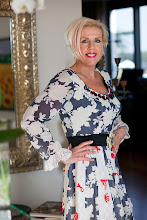
With the London Marathon fast approaching, there’s something many participants will be worrying about – nipple chafing. The people I feel really sorry for are the celebrity participants because you can guarantee that, if they’re female, nine out of ten will have had breast implants.
That’s a real shame because it’s going to be rather difficult for them to replicate the authentic flapper look which is just about to become really hot (give or take a few years, as I always seem to be several trends ahead of what stylish people are wearing on the street).
Nevertheless, if you’re contemplating having the op, I’d give it a re-think as styles tend to change over time. What’s more, a friend of mine - who lives in LA and has assets to prove it - told me that, after her breast enhancement, she wasn’t able to go jogging for months on end. Apparently, over there, women’s clothing is specially designed to take account of the average Californian female’s unnaturally large breasts, which are totally out of proportion with the rest of her body. Meanwhile, back at the cutting edge, flapper fashions are making a comeback - and it seems that even national trend-setter Kate Moss (she of refreshingly natural looking boobs) is a big fan. Did you know that, in the 1920s, bras, or brassieres as they were called at the time, were no more than bandeau style chest-flatteners, originally attached to a corset? Those with small breasts got away with wearing the fashionable camisoles of the time, but bustier ladies found themselves resorting to the scarily named Symington Side Lacer – a contraption that was laced at the sides to pull in and flatten the chest. It wasn’t until a bit later that bra cup sizes were introduced … perhaps something to take into account if you're thinking of investing in original 1920s fashion.
Did you know that, in the 1920s, bras, or brassieres as they were called at the time, were no more than bandeau style chest-flatteners, originally attached to a corset? Those with small breasts got away with wearing the fashionable camisoles of the time, but bustier ladies found themselves resorting to the scarily named Symington Side Lacer – a contraption that was laced at the sides to pull in and flatten the chest. It wasn’t until a bit later that bra cup sizes were introduced … perhaps something to take into account if you're thinking of investing in original 1920s fashion.
The word ‘flapper’ is originally a British term as it’s over here that it became the ‘in thing’ for young women to wear rubber galoshes, which were left open to flap when they walked. The flapper look as we know it was later popularized by Coco Chanel and other leading designers of the day throughout the United States and Europe. The term ‘flapper’ became synonymous with liberated young women. Flappers were bold, confident, and sexy. They tried faddish new diets in an effort to achieve a fashionable thinness, because new fashions required slim figures, flat chests, and narrow hips. As it happens, the flapper dress was much less complicated than earlier designs and wasn’t the sole preserve of the moneyed classes. Skirt lengths in the ‘20s varied dramatically: they weren’t all short and, contrary to popular belief, the women weren’t all incredibly skinny either. Although the fashion was for dresses to be loose fitting, the straight skirt style of flapper dresses is fairly timeless and actually suits most people – what’s more, at ShopCurious, we’ve got some beautifully beaded original vintage examples in UK sizes from 6 to 16.
As it happens, the flapper dress was much less complicated than earlier designs and wasn’t the sole preserve of the moneyed classes. Skirt lengths in the ‘20s varied dramatically: they weren’t all short and, contrary to popular belief, the women weren’t all incredibly skinny either. Although the fashion was for dresses to be loose fitting, the straight skirt style of flapper dresses is fairly timeless and actually suits most people – what’s more, at ShopCurious, we’ve got some beautifully beaded original vintage examples in UK sizes from 6 to 16.
Flappers are notorious for rejecting strict Victorian rules and representing everything new about women – smoking, wild dancing, short bobbed hair, brightly coloured lipstick, reckless behaviour and male attitudes. In the early 1900s, women started to work alongside men for the first time and to move away from the role of being purely mothers and housewives.
Of course, all of this ended with the Great Depression.
In terms of fashion styles, whatever their optimum bust sizes, it seems we’ve turned full circle many times. With all the changes that are going on in the world at the moment, I’d love to know where we’re headed next - and I’m not just curious, I’m totally flummoxed. Perhaps we should just slow down, recycle, re-use and give ourselves time to reevaluate … and maybe even accept ourselves the way we are.
Will you?
dropshipper
3 years ago







No comments:
Post a Comment